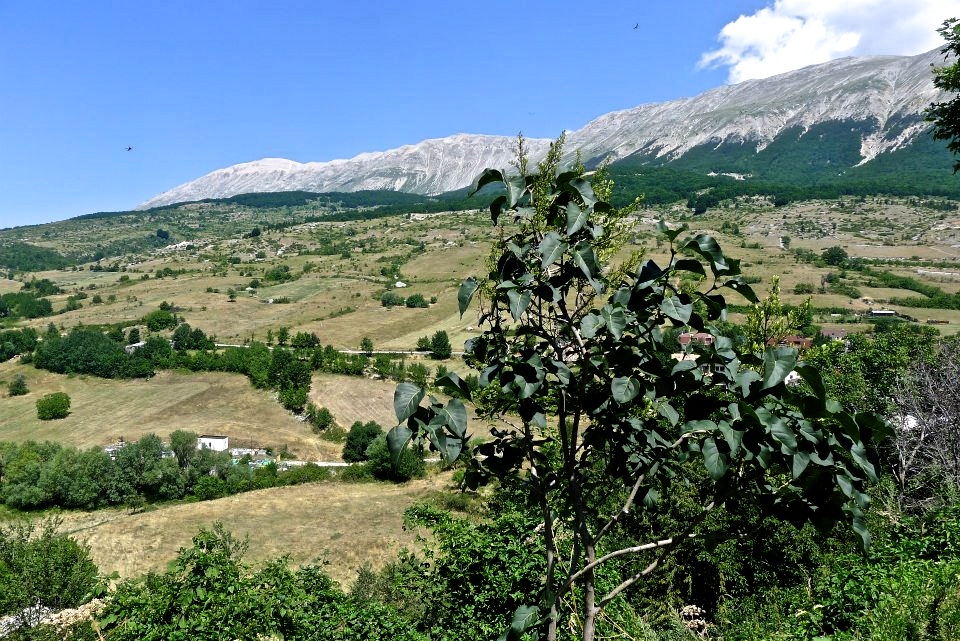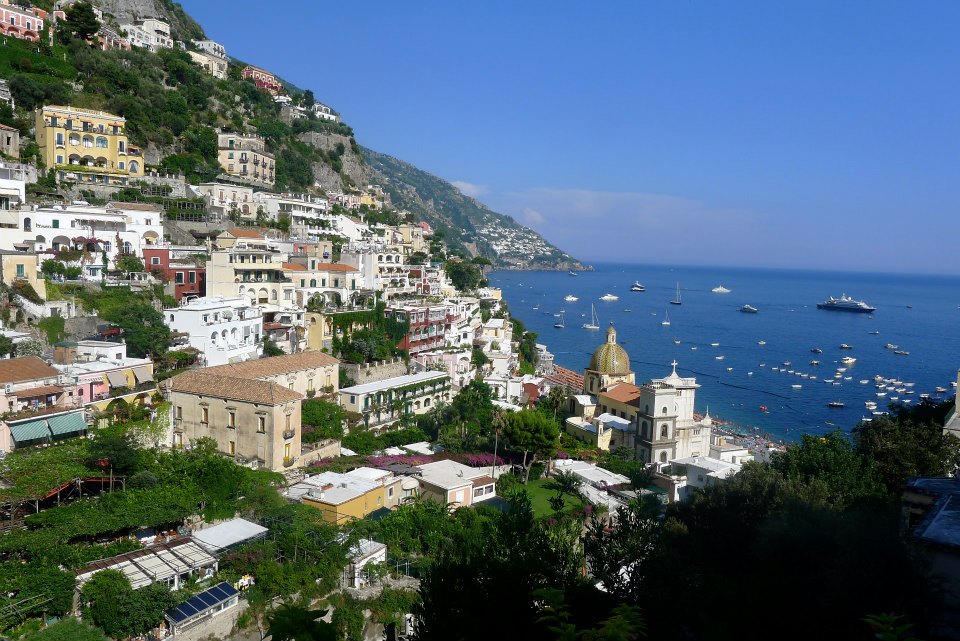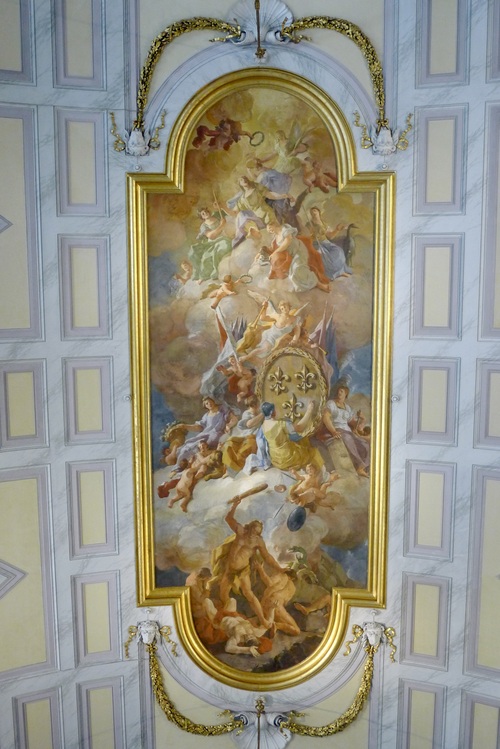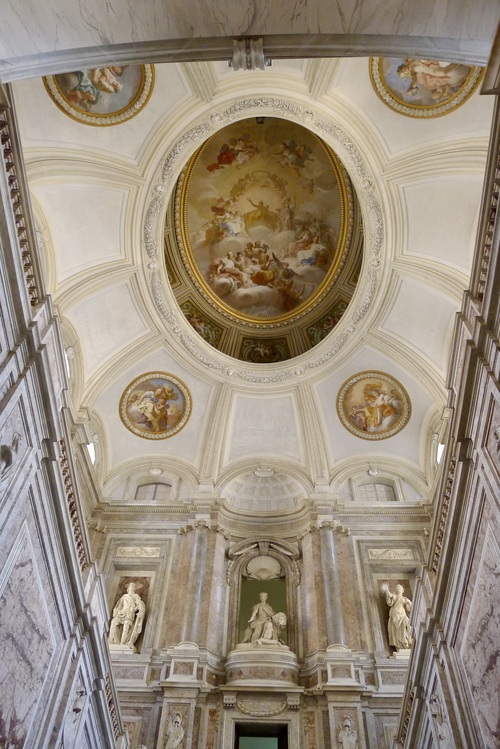
Visiting the Reggia di Caserta in Italy
I assume that most people have heard of Versailles. The monumental 17th century palace is among the most renowned royal residences in the world. It draws upwards of 15 million annual visitors and is a mainstay of Paris itineraries.
But even if you’re a well-traveled history buff, chances are that one of Europe’s other royal gems—the Caserta Palace—isn’t on your radar.
In fact, had you not stumbled upon this blog post precisely because you were looking for information on the massive estate, I might even assume you’d never heard of it.
The Italian royal residence flies largely under the radar, despite being a UNESCO World Heritage Site. Known in Italy as the Reggia di Caserta, the lavish palace is one of Europe’s largest buildings and a stunning homage to Baroque architecture.
Yet, until I found myself in front of its stately yet unassuming exterior, I didn’t even know it existed.
THE CASERTA PALACE IN ITALY: AN OVERVIEW
The Caserta Palace dates back to 1752. It was modeled after the palace of Versailles and built for the king of the Bourbon monarchy.
In a bid to outdo the iconic French estate, Italian architect Luigi Vanvitelli designed a palace even bigger than its French rival. With five stories, 1200 rooms, 34 staircases and a 250m-long facade, the Reggia was the largest building in Europe at the time of its construction.
Today, the Reggia remains is the largest palace in the world by volume. In other words, taking into account floor space and wall height, the 2 million cubic meter palace is bigger than any other—including the Palace of Parliament in Romania (largest by floor space) and the Malbork Castle in Poland (largest by land area).
The Caserta Palace is considered to be a triumph of Italian Baroque architecture. UNESCO has described it as “the ‘swan song’ of the spectacular art of the Baroque period.”
The palace’s extensive gardens are an integral part of the estate. Visiting the massive park on the palace grounds is as worthwhile as setting foot into its royal residences.
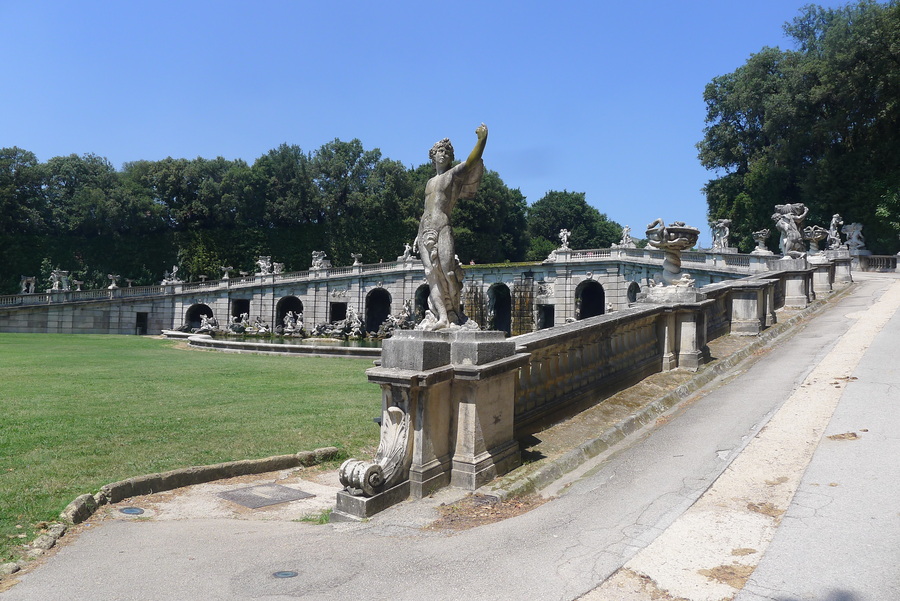
Though the Reggia di Caserta is among Italy’s most noteworthy Baroque buildings, it doesn’t receive the credit it deserves.
After the unification of Italy at the end of the 19th century, the magnificent property was almost completely abandoned.
And today—though it will allegedly soon undergo an extensive multi-million-dollar renovation—the Reggia di Caserta still appears somewhat neglected.
THE REGGIA DI CASERTA EXTERIOR
The Caserta Palace is one of the grandest estates in the world—comparable to Stockholm’s Drottingholm Palace or Vienna’s Schonbrunn.
Yet, if you were to judge it solely by its cover, you likely wouldn’t know of its riches.
From the outside, the Reggia is somewhat plain and nondescript. When I visited, it appeared almost abandoned. I was surprised to see that the gardens in front of the palace were overgrown and littered with trash.
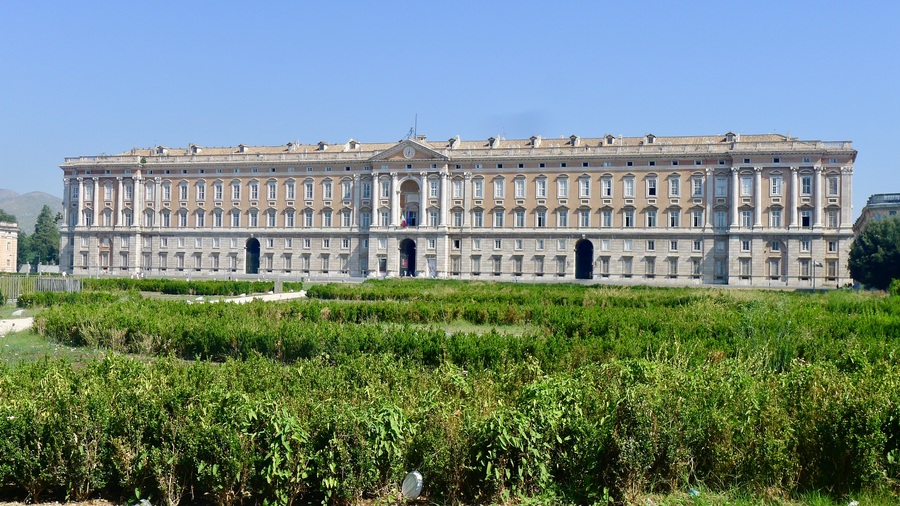
In fact, tourism at the Reggia is remarkably understated. Outside the entrance to the Caserta Palace, you won’t find souvenir stalls with replicas of the Baroque structure. Nor will you see hoards of tourists taking selfies for Instagram.
For somehow, despite its grandeur, the regal-yet-unassuming building seems forgotten amidst Italy’s wealth of tourist attractions.
THE CASERTA PALACE INTERIOR
As you enter the Reggia, the first thing you’ll see is a grand marble staircase that leads to the Royal Apartments. Vanvitelli’s immense staircase is one of the highlights of Caserta Palace.
But the grand staircase is just an appetizer for the decadence that lies beyond.
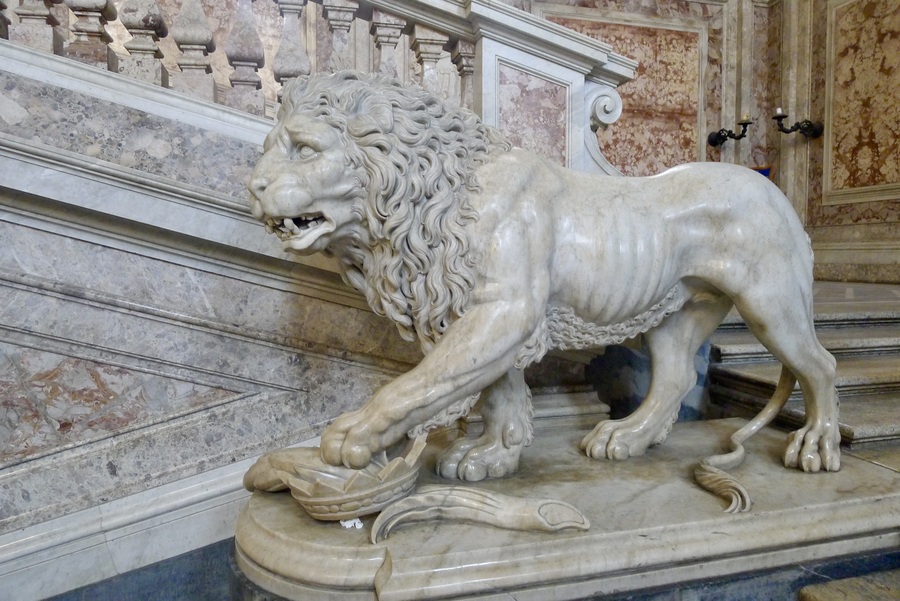
The Reggia di Caserta’s interior is divided into four oblong courts that fan out from a central vestibule. Its entire interior boasts a dizzying display of opulence and wealth.
Though we only visited one floor of the building, it took us a few hours to marvel at its enormous rooms. The walls and ceilings of the Royal Apartments are covered frescoes, sculptures, and tapestries.
Room by room, the building’s opulent display puts on a show that rivals that of Europe’s most lavish palaces.
The interior of the Reggia has served as the backdrop to various films. Some might recognize as the palace of Queen Jamilla from Star Wars.
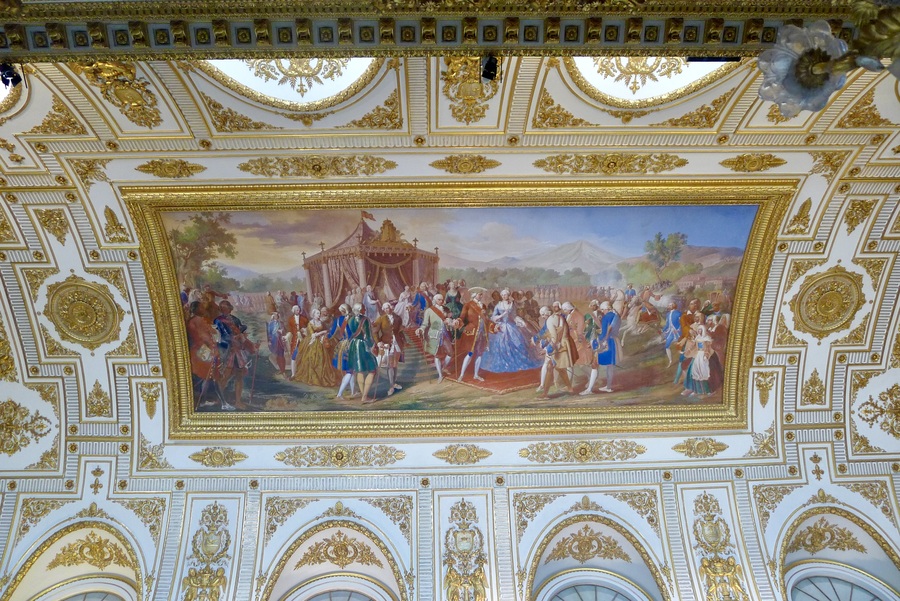
Though there were certainly other tourists milling about when we visited, I found the Reggia’s lack of crowds to be both refreshing and disorienting.
Considering the UNESCO World Heritage site’s scale and beauty, I would have expected to see throngs of tourists wandering about its rooms.
THE REGGIA PALACE GARDENS
Perhaps even more than for the palace itself, the Reggia di Caserta is known for its expansive gardens.
The pools, fountains and cascades in the estate’s park are aligned through a ‘telescope effect’ that extends outward from the salmon-colored palace.
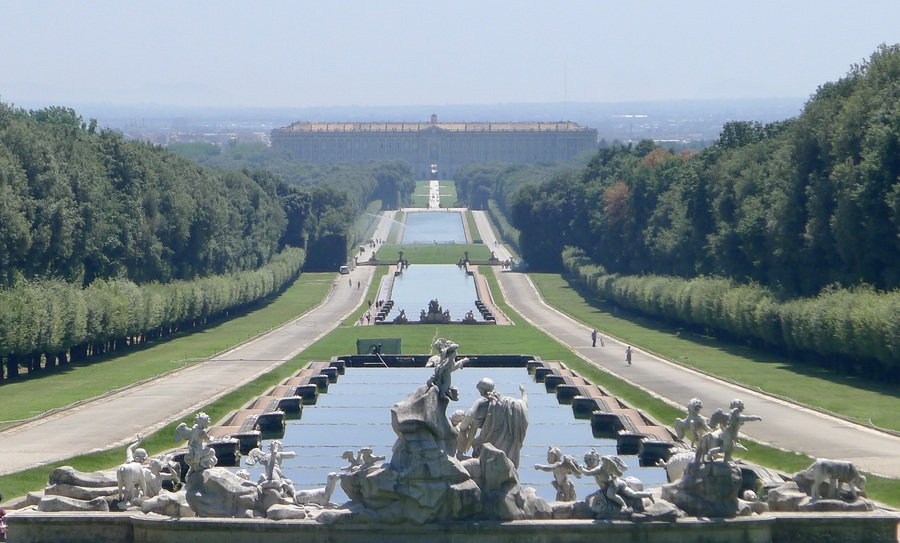
We chose to walk the entire length of the park during our visit to the Caserta Palace gardens. And in doing so, we were able to comprehend the enormous scale of the place.
We walked past marvelous statues and cascading fountains, while trying to weave our way through the sprinklers to cool off in the heat.
The length of the gardens is deceptive. The distance from the rear of the palace building to the end of the park is almost three kilometers.
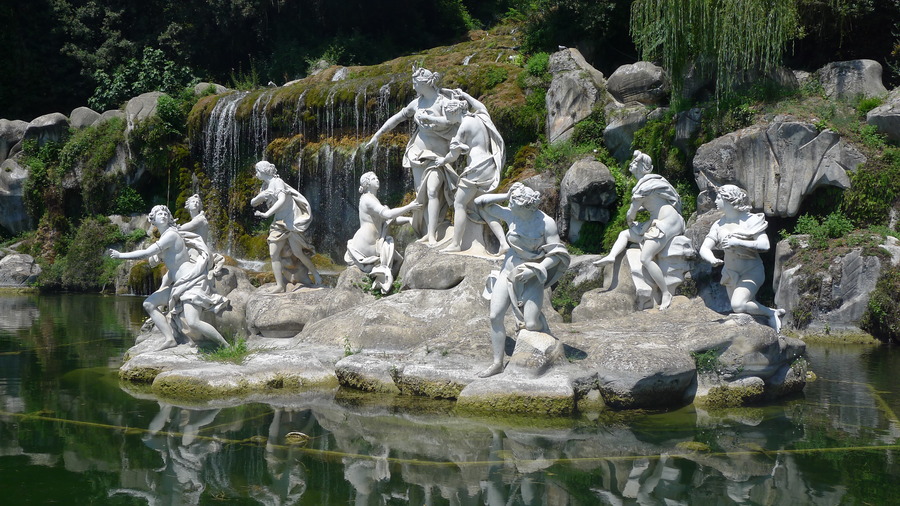
We ended up spending quite a long time at the Reggia di Caserta and its surrounding gardens. The place was simply much larger than we had anticipated and there was so much to absorb.
After walking the length of the fountains, we spent a bit of time exploring the English Garden on the palace grounds. The English Garden contains plants from all over the world. It is a beautiful shaded spot with fountains, statues and crumbling porticoes.
GETTING TO THE REGGIA PALACE
My family and I stopped by the the Caserta Palace following a Puglia road trip in southern Italy. Its proximity to the Amalfi Coast and Pompeii convinced to make a quick detour.
The Caserta Reggia lies 30 minutes north of Naples, in the town of Caserta. It is a popular place to visit when traveling around Naples, though it can also easily be visited by train as a day trip from Rome.
Regular trains connect Naples to Caserta in less than an hour. Caserta’s train station lies directly opposite the palace grounds.
If you’re driving from Naples, exit the A1 at Caserta Sud and follow signs for the Reggia.
WHERE TO STAY NEAR THE REGGIA DI CASERTA
While many travelers will choose to stay in Naples and visit Caserta as a day trip, there are a handful of guesthouses and apartments near the palace as well.
B&B la Corte in Centro, located within close walking distance of the Reggia, has near-perfect reviews on Booking.com. With a kitchenette and air conditioning, it is a mid-range option ideal for families.
CASERTA PALACE HOURS AND ENTRANCE FEES
The Reggia’s opening and closing hours vary a bit, depending on whether you’re visiting the park or its gardens.
The palace is open daily from 9:30am-7:30pm, while the park opens at 8:30am and closes at 7pm. The English Garden opens at 8:30 and closes an hour earlier than the rest of the park, at 6pm.
The entire Royal Palace of Caserta, including the park and gardens, is closed on Tuesdays.
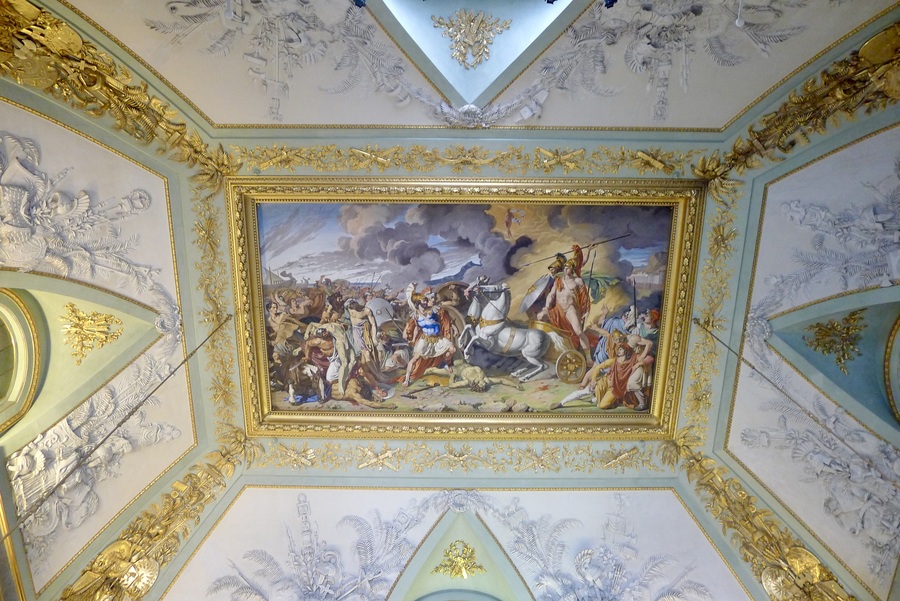
Access to the Reggia’s interior costs 10€, while viewing its extensive gardens costs 9€.
Travelers wishing to purchase a combination ticket can access the entire complex for a discounted 14€.
***
Around Europe, royal residences—from Versailles in France to the Drottingholm Palace in Stockholm, and from Peles Castle in Transylvania to Schonbrunn in Austria—showcase the opulence and extravagance of society’s elite.
Though I’d never heard of the Reggia di Caserta before visiting, its grandeur and opulence took me by surprise.The Caserta Palace may not look like much from the outside, but its royal apartments and gardens are among the most impressive in Europe.
Hopefully, one day, the lavish estate will receive the recognition it deserves.
